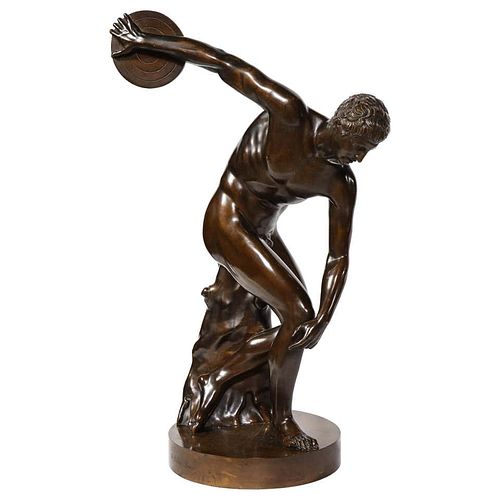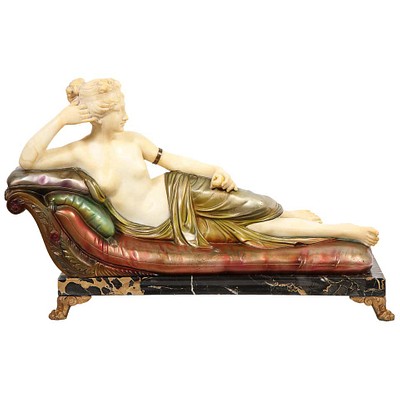The Discobolus of Myron, Exceptional Italian Bronze Sculpture of Discus Thrower 1970
Lot 44
About Seller
Solomon Treasure
1050 2nd Ave #83
NY, NY 10022
United States
Four Generations of collecting exquisite European Art & Antiques.
Categories
About Auction
By Solomon Treasure
Oct 29, 2020 - Nov 29, 2020
Set Reminder
2020-10-29 00:00:00
2020-11-29 00:00:00
America/New_York
Bidsquare
Bidsquare : Thanksgiving Sale!
https://www.bidsquare.com/auctions/solomon-treasure/thanksgiving-sale-5936
Fall Collector Opulent Auction - No Buyers Premium! Solomon Treasure mory@solomontreasureny.com
Fall Collector Opulent Auction - No Buyers Premium! Solomon Treasure mory@solomontreasureny.com
- Lot Description
The Discobolus of Myron, Exceptional Italian Bronze Sculpture of a Discus Thrower, circa 1870. One of the finest we have seen in all our years in the business. Very finely cast. Standing Tall and proud at 28.5" high x 16.5" wide x 11" deep. Very good condition. Patina is excellent. See photos. Ready to place. The Discobolus of Myron ("discus thrower", Greek: DiskobМ_los) is a Greek sculpture completed at the start of the Classical Period, figuring a youthful ancient Greek athlete throwing discus, about 460‰ЫТ450 BC. The original Greek bronze is lost but the work is known through numerous Roman copies, both full-scale ones in marble, which was cheaper than bronze, such as the first to be recovered, the Palombara Discobolus, and smaller scaled versions in bronze. A discus thrower depicted is about to release his throw: "by sheer intelligence", Kenneth Clark observed in The Nude, "Myron has created the enduring pattern of athletic energy. He has taken a moment of action so transitory that students of athletics still debate if it is feasible, and he has given it the completeness of a cameo. The moment thus captured in the statue is an example of rhythmos, harmony and balance. Myron is often credited with being the first sculptor to master this style. Naturally, as always in Greek athletics, the Discobolus is completely nude. His pose is said to be unnatural to a human, and today considered a rather inefficient way to throw the discus. Also there is very little emotion shown in the discus thrower's face, and "to a modern eye, it may seem that Myron's desire for perfection has made him suppress too rigorously the sense of strain in the individual muscles, Clark observes. The other trademark of Myron embodied in this sculpture is how well the body is proportioned, the symmetria.
- Shipping Info
-
In House
-
- Payment & Auction Policies
-
Available payment options
-



 EUR
EUR CAD
CAD AUD
AUD GBP
GBP MXN
MXN HKD
HKD CNY
CNY MYR
MYR SEK
SEK SGD
SGD CHF
CHF THB
THB






























